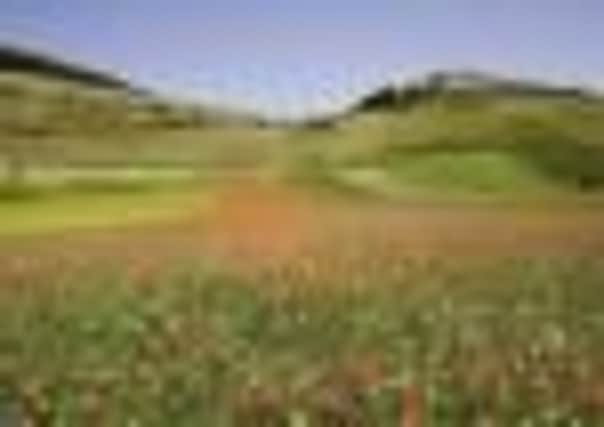Unknown Umbria


Umbria is a great destination for lovers of history, culture and outdoor adventures.
Carolina de Capell Brooke from CV Travel has been visiting the region for over 40 years and has put together her top suggestions and insider tips for where to go, what to see and where to stay in authentic Umbria.
Taking in the towns


Advertisement
Hide AdAdvertisement
Hide AdUmbria’s capital and largest town, Perugia, is a bustling place alive with students from its university and art academies and host to one of Italy’s best-known contemporary music festivals, Umbria Jazz, as well as the annual chocolate festival, Eurochocolate. It is also home to the region’s finest collection of medieval and Renaissance paintings, housed in The Galleria Nazionale dell’Umbria. There’s no shortage of things to do and when in need of a rest the best spot is Corso Vanucci, a broad street with a string of cafes and restaurants down the middle that is perfect for people watching with a glass of wine.
To find authentic Umbria, it is best to head away from the capital and into the countryside to explore the many picturesque hill towns. Todi is a beautiful walled town, with a 16th century church that is visible for miles around, and Gubbio is hailed as the most attractive of all of Umbria’s medieval hill top towns. Also worth exploring is Montefalco, known as ‘the balcony of Umbria’ because of its amazing views over the two river valleys below, the 12th century town has five entry gates, each giving onto a street that leads up to the circular piazza at the town’s highest point.
Where to stay
Set in the tranquillity of Umbria’s rolling hills, Casa Andrea, has beautiful views of picturesque Todi and is an easy drive to Umbria’s hill top towns. This lovely family villa with light, airy interiors and stylish furnishings sleeps eight and shares a tennis court and heatable pool. An ideal villa for those wishing to combine relaxation with day trips to towns and villages.


Adventures in the country
Lago Trasimeno is the fourth largest lake in Italy and is ideal for swimming, windsurfing and sailing. Those seeking tranquillity in Umbria’s countryside can take a ferry to one of the lake’s islands or enjoy a wonderful hike in the hills above the lake.
Advertisement
Hide AdAdvertisement
Hide AdThe Nera River Park in Valnerina offers visitors an unspoilt natural landscape of meadow, forest, streams, gorges and waterfalls, including the Roman-made Cascate delle Marmore (Marmore Waterfalls), where a mass of water gushes from 165 metres. Adventurous types can enjoy rafting, canoeing and canyoning.
In the Sibillini Mountains in east Umbria lies Piano Grande, an extraordinary upland plain situated above 4,000ft and uninterrupted by tree, hedge or habitation for miles and miles. The area, which is overlooked by the 8,000ft peak of Monte Vettore, is renowned for its amazing flower displays, which every spring burst with wild crocuses, narcissi, wild tulips, poppies, orchids and many rare plant species. It’s a wonderful area for walking, where you can literally follow in the footsteps of saints along ancient pilgrim routes, and enjoy quite challenging hikes through the rugged peaks of the Mount Sibillini National Park.
Where to stay
Casa del Cavaliere is a converted tobacco-barn that sleep up to four guests and has glorious views of the valley below and a large private swimming pool. Paths leading up into the hills will be enjoyed by walkers and nature lovers, as will a drive to Lake Trasimeno. After a day in the Umbrian countryside guests can take advantage of the coolness of the house in summer, or the warmth of the efficient wood stove in spring and autumn.
Following the history trail
Assisi, the birthplace of St.Francis, the patron Saint of Italy, has been a pilgrim’s destination for almost 900 years. Its pride, the Saint Francis Basilica, is frescoed from top to bottom by the significant artists of the time, including Giotto and Pietro Lorenzetti, and holds the tomb of the saint.
Advertisement
Hide AdAdvertisement
Hide AdHistory lovers will not want to miss Orvieto, a beautiful town which sits atop a plateau of volcanic rock and boasts one of the most splendid duomos in Italy. It has a glorious facade and a majestic fresco cycle, ‘The Last Judgement’ (1499-1504), by Luca Signorelli. It’s been claimed that it surpasses Michelangelo’s similar cycle in the Sistine Chapel, which was painted forty years later and seemingly influenced by Signorelli’s fresco. The town has a unique network of tunnels set in its rocky base that served as tombs and storehouses for its Etruscan founders. Underground tours take visitors through the caves to see the remains of an old olive press, two impressive 130-feet-deep Etruscan well shafts and the remains of a primitive cement quarry.
The Concordia Theatre in Monte Castello di Vibio is known as the smallest theatre in the world. Finished in 1808, under Napoleonic occupation, the theatre has only 99 seats. The wooden interior is a rare example of Goldoniano style and offers a unique space for scenery, actors and audience. It’s best experienced by watching one of the many productions which take place throughout the year and include opera, Jazz and classical concerts.
Where to stay
Located in rural Umbria, Borgo San Biagio is a former medieval hamlet that has been lovingly restored. A short drive from Assisi and Perugia it is in great location to explore the art and historic treasures of the area. Some of the most famous artistic centres of Tuscany, including Siena and Lucca, are also a day trip away.